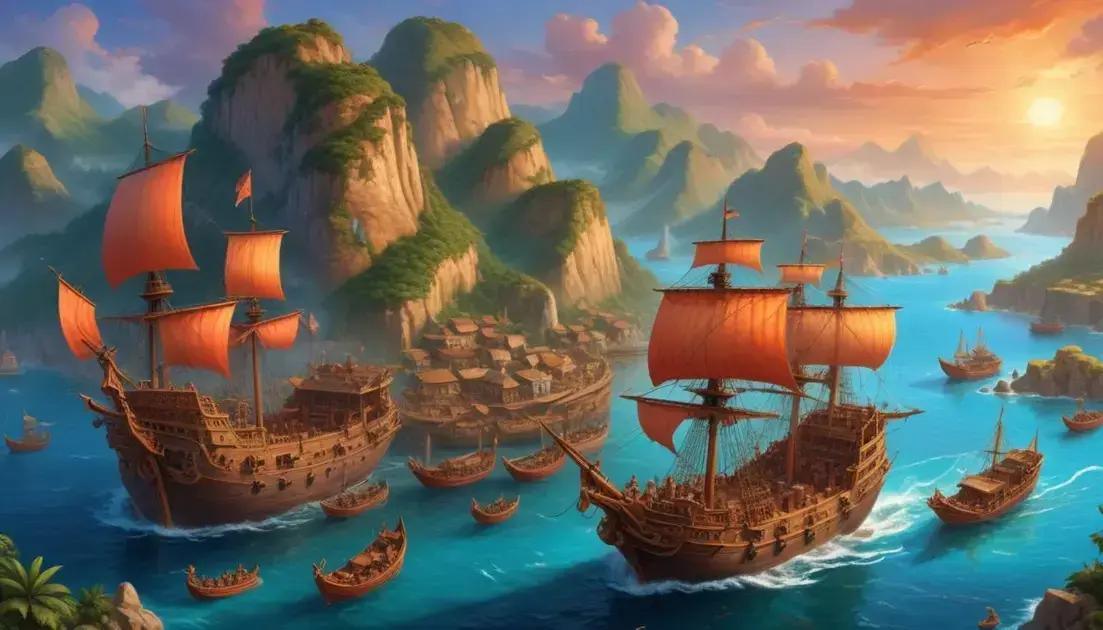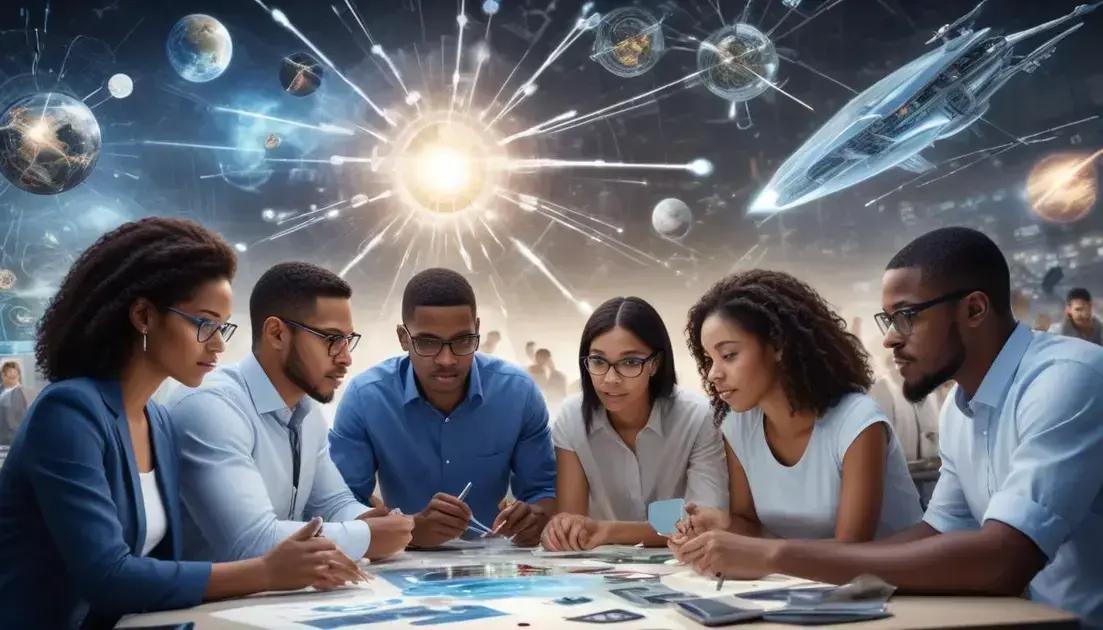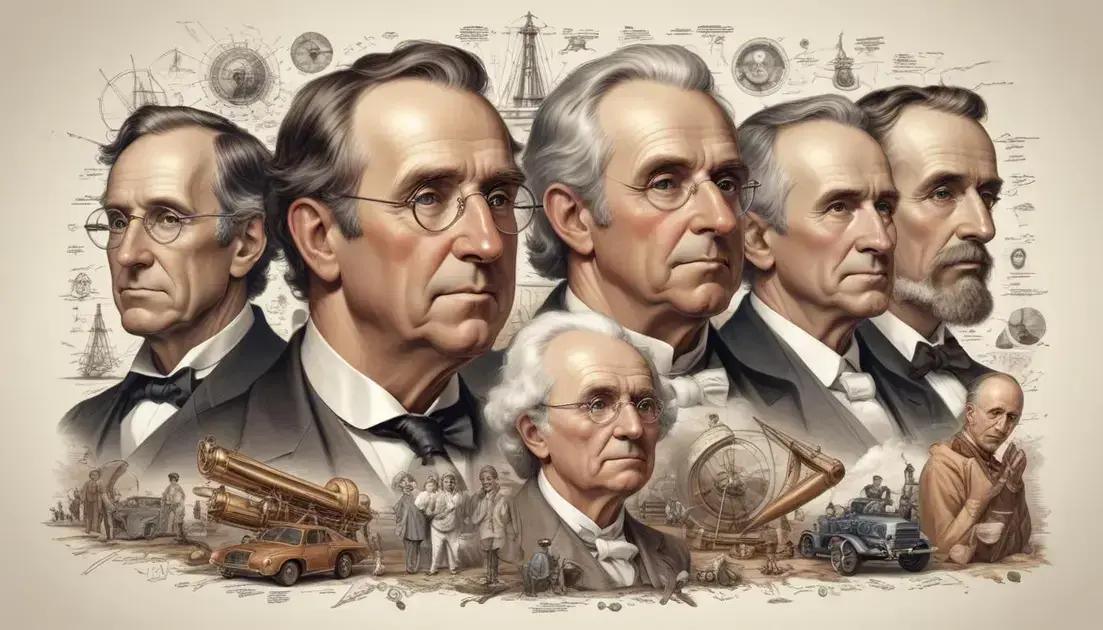
Great Navigations: When the World Connected
Historical trade routes have significantly shaped modern global trade and cultural exchanges. These routes allowed for the movement of goods, ideas, and cultural influences, leading to interconnected economies and societies. The legacy of navigation tools and methods from early explorers continues to impact modern transportation and trade practices. Today, we can see the influence of these exchanges in everything from international cuisine to global business operations, emphasizing the importance of cooperation and shared knowledge in our interconnected world.
Global Trade has forever transformed the connections between continents and cultures, shaping our world as we know it. Have you ever wondered how these exchanges influenced our societies?
Introduction to Global Trade
Global Trade has linked diverse cultures for centuries. This connection allowed goods, ideas, and traditions to travel far and wide. Have you ever thought about how spices from Asia reached Europe?
As explorers sailed the oceans, they opened new routes and markets. Merchants traded everything from silk to wheat. These exchanges did not just change economies; they changed societies.
Imagine a map dotted with routes. Each line shows a path where cultures met. These meetings led to shared knowledge and innovations. For instance, the compass improved navigation, which helped traders find their way.
In addition to goods, the flow of ideas flourished. Global trade allowed societies to share food recipes and art forms. This cultural blend enriched daily life and sparked creativity. Think about how different our world would be without these connections!
Today, modern technology continues this legacy. Although we mostly travel or communicate online now, the essence of global trade is still alive. It shows how interconnected we are, making the world feel smaller.
Impact of Cultural Exchanges
Cultural exchanges have shaped our world in amazing ways. When people trade, they don’t just swap goods. They share traditions, beliefs, and practices. This mix of cultures enriches our lives and opens our minds.
For instance, food is a big part of cultural exchange. Dishes from different countries travel the globe. Have you ever enjoyed sushi or curry? These meals tell the story of their origins.
Art is another way cultures connect. Different art styles inspire creativity. For example, the bold colors of African art influenced European painters. This blending creates new styles and expressions.
Language also benefits from cultural exchanges. Words from various languages often enter everyday speech. Think about how many English words come from Spanish, French, or Italian. Learning new languages can help us understand different cultures better.
These exchanges don’t just enrich individuals. They also strengthen communities. When people from diverse backgrounds come together, it fosters understanding and respect. This unity can lead to powerful movements.
In today’s world, technology plays a big role in cultural exchanges. Social media allows us to connect with people globally. We can easily learn about other cultures with just a click. This makes our world even more interconnected.
The Role of Navigation in Expansion
Navigation has played a key role in the expansion of trade and exploration. Without proper navigation, early explorers would have struggled to find new lands. They relied on stars and simple tools to guide them.
Think about it: sailing across vast oceans was no easy task. Explorers used maps that often were inaccurate. Yet, their determination led them to discover new routes and territories.
One important tool was the compass. This simple device helped sailors determine direction. With the compass, ships could travel more confidently, leading to faster and safer journeys.
As navigation improved, so did trade. Merchants could establish routes that reached all corners of the world. They brought back goods and ideas, which enriched cultures everywhere.
Maps also got better over time. Cartographers began to create more accurate maps, showing coastlines and new lands. These maps made it easier for other sailors to follow established routes.
Today, we still see the impact of early navigation. Modern GPS technology has made it even simpler to travel. While we rely on devices, the spirit of exploration remains alive, just as it did centuries ago.
Modern Implications of Historical Trade Routes
Modern implications of historical trade routes are still felt today. These ancient paths not only moved goods but also ideas and cultures. Many cities were built along these routes, turning them into hubs of trade and interaction.
Today, we see the impact of these routes in our global economy. Products from all over the world are available in local stores. This exchange started with early traders who followed the Silk Road and other routes.
Also, historical trade routes have influenced modern transportation. For instance, many highways and railroads trace the paths of ancient trails. This shows how history shapes our present-day logistics.
Cultures that once connected through trade still affect one another today. For example, countries share foods, music, and art. You can see influences from different cultures in cuisine, which makes dining a global experience.
Moreover, trade routes taught us about cooperation. Different cultures worked together to facilitate trade. Understanding this cooperation is important as we tackle modern global challenges.
In conclusion, historical trade routes laid the foundation for today’s interconnected world. They remind us of the importance of sharing and learning from one another.
Conclusion
In conclusion, understanding the impact of global trade and cultural exchanges is crucial for recognizing how our world connects. The journeys of traders long ago laid the groundwork for today’s bustling economies and diverse cultures. We can see their influence in the foods we eat, the art we appreciate, and the technology we use.
As we move forward, it’s important to remember that the lessons from history still apply. Just like those early explorers and merchants, we must continue building bridges and sharing knowledge. This spirit of cooperation and exploration can help us tackle modern issues and shape a brighter future together.
So, let’s celebrate our shared history while embracing the opportunities that lie ahead. By learning from the past, we can create a more connected and prosperous world for everyone.


